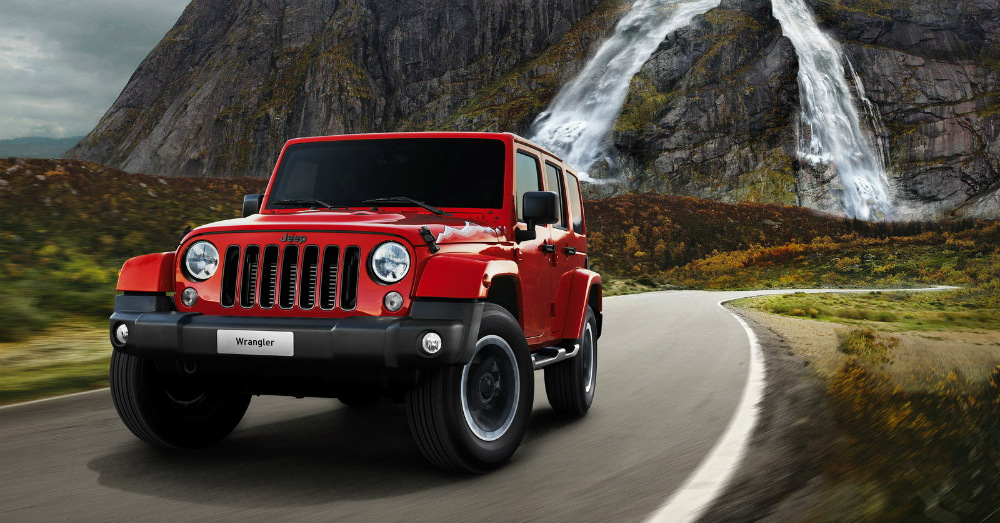In late 2014 well-known auto manufacturer, Jeep, rocked the world of many die-hard fans by announcing the potential manufacturing of a Wrangler body made completely of aluminum, rather than its former steel construction. Given that the Jeep Wrangler has been around since the days of the Second World War, such a drastic change was sure to shake things up in the world of a vehicle that has generated its own subculture.
The plan for the Wrangler was to begin manufacturing the rugged and very popular vehicle with an aluminum uni-body. Jeep dealers immediately voiced concerns about the new lighter construction taking something away from the durable construction and off-roading potential of the Wrangler. The intention was to make the classic vehicle a great deal lighter and thus, more gas efficient. Jeep claimed that the lower weight of the Jeep wouldn’t negatively impact the solidity of their uber-popular vehicle, but there were still a number of detractors.
The biggest criticism from Jeep supporters was due to the idea that production would be removed from Jeep’s Toledo, Ohio plant where they’ve been made since the mid-forties. Jeep had always been considered the true picture of American construction. The original Jeeps were built to carry U.S. troops during the war, and many felt that the departure from production in Toledo was a bit of a slap in the face to the people that had produced the iconic vehicle in Ohio. CEO, Sergio Marchionne was mum when the initial announcement was made about where production would go, simply saying it would not stay in Toledo.
It turns out that the hype was pretty much all for nothing. Marchionne recently confirmed that the Wrangler will retain its current body on frame design. They will be using some aluminum in the process in order to take some of the weight off, but will still be mostly steel. Chrysler Fiat’s CEO stated that the reason for the change was due to cost. It was discovered that the cost of the aluminum uni-body did not justify the final result. Of course, some people still harbor the belief that the naysayers may have had something to do with the decision.
The decision to produce the Wrangler using aluminum for the body was to increase the fuel economy. However, the true blue fans don’t seem to mind that the Wrangler isn’t getting the gas mileage that other SUVs are getting. Many Jeep owners purchase the Wrangler, not for its mileage, but for its rugged capabilities and easily adjusted appearance. Taking the doors and top off of your car to enjoy the summer sun doesn’t happen with any other vehicles, so many are willing to forgive the less than perfect gas mileage. Perhaps this is the reason for the amount of critics who objected to the new design.
The decision to move away from fully aluminum production also means good things for Toledo, Ohio as a great of employment comes from the Jeep plant. The Toledo plant was lacking the space to produce the uni-body design, and this would have eventually taken away from the jobs available. Marchionne says the Wrangler will be produced using some aluminum to subtract some pounds, but the previous plan is just not an option.
It seems as though this announcement is good news all around. Jeep fans are happy that their precious Wrangler will be pretty similar to the current versions, and maybe a little bit more efficient than it has been. Employees of the Toledo plant are over the moon to still have their jobs at the end of the day as they continue production in Ohio. Chrysler Fiat will also be happily saving a large sum of money that would have been spent on the uni-body design. The unfortunate side-effect of the re-design would have been an increased price tag for this iconic vehicle, which was another reason that most people objected. Happily, the price tag will remain close to what it is now. Good news for everyone involved.
There is an old cliché that says you don’t monkey with tradition. This monumental decision by Chrysler Fiat is proof that tradition is highly valued, as well as the bottom line. The money is certainly there to have produced this style of Wrangler, but this choice shows a dedication to their market as well. Had they continued with this styling, Chrysler Fiat would have had to raise the price of the Wrangler remarkably. Traditionally, the Wrangler is the working man’s vehicle, and you don’t monkey with tradition!
This post may contain affiliate links. Meaning a commission is given should you decide to make a purchase through these links, at no cost to you. All products shown are researched and tested to give an accurate review for you.

